Qianlong Baicai 乾隆白菜 is an extremely simple yet very well-known salad dish from Beijing. Translated into English as “Emperor Qianlong’s Cabbage”, this dish could be interpreted as the Chinese version of the American “Caesar’s Salad” – although its origins are older and could really traced back to Manchurian emperor.


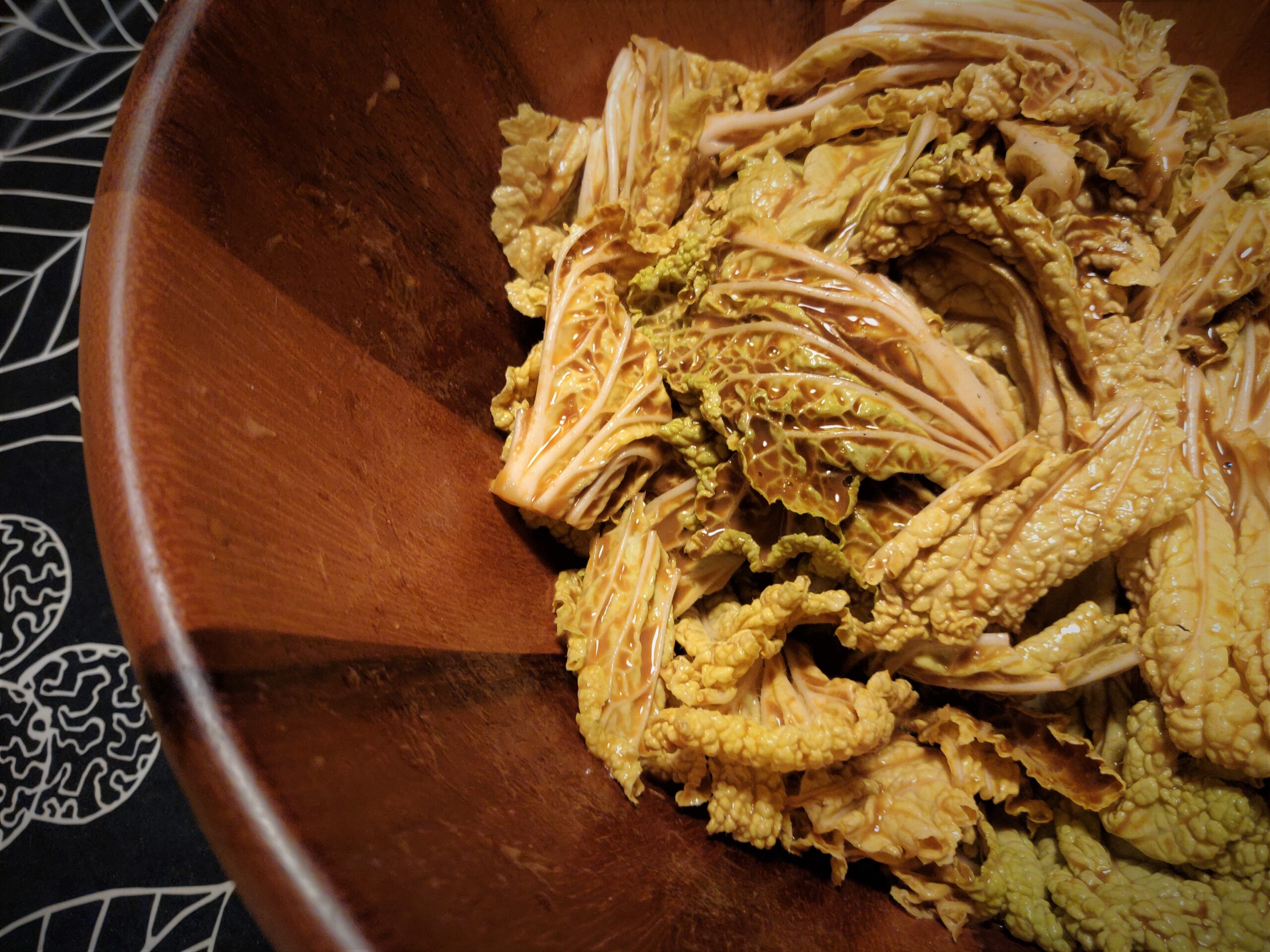
Who was Emperor Qianlong 乾隆?
Beijing’s most famous salad – Qianlong Baicai 乾隆白菜 – can be found in every restaurant in the Chinese capital today. Served as an appetiser (or “entrée”) which in Chinese cuisines is known as either “Liangcai 凉菜” in the north or “Lengpan 冷盘” in the south, Qianlong Baicai is a perfectly refreshing and crunchy salad that prepares your appetite for the rest of the meal, whether in the summer or winter.
Before we explain the origin of the name, let’s first get acquainted with Emperor Qianlong.
As we all know, Imperial China ended with the Qing Dynasty that lasted from 1636 to 1912. But objectively speaking, this was not China but the Manchurian Empire, as the country was ruled by a Tungusic-speaking ethnic group who unified other Jurchen tribes to form Manchuria (in modern-day Northeast China and Mongolia). All citizens living within the Manchurian Empire had to adopt the ethnic Manchurian dress, which for men was to shave the front of their head and to tie their hair into a pigtail in the back. This became a western misconception of a Han Chinese male in the 19th century.
Reigned from 1735 to 1796, Emperor Qianlong 乾隆 was the most beloved ruler of the Chinese living under Manchurian colonisation. Born “Aisin Gioro Hung li” and his official Manchurian imperial name was “Abkai wehiyehe“, Qianlong maintained peace within his empire while at the same time, enlarged it to incorporate neigbouring nations into Greater Manchuria. The Dzungar Khanate, land of the mixture between western Mongolian “Dzungars” and Indo-European Sogdians who converted to Islam in the 8th century through trade on the Silk Road – known today as Uyghurs – was conquered and renamed “Xinjiang” (New Territory). Just like how his father Emperor Yongzheng who subdued Tibet in 1728, Qianlong ruthlessly quelled another Tibetan rebellion in 1751 and declared that Tibet would forever be under Manchurian rule. As one can see, Manchurian Emperor Qianlong’s legacy has lasting impact on today’s People’s Republic of China autocratically ruled by the Chinese Communist Party.
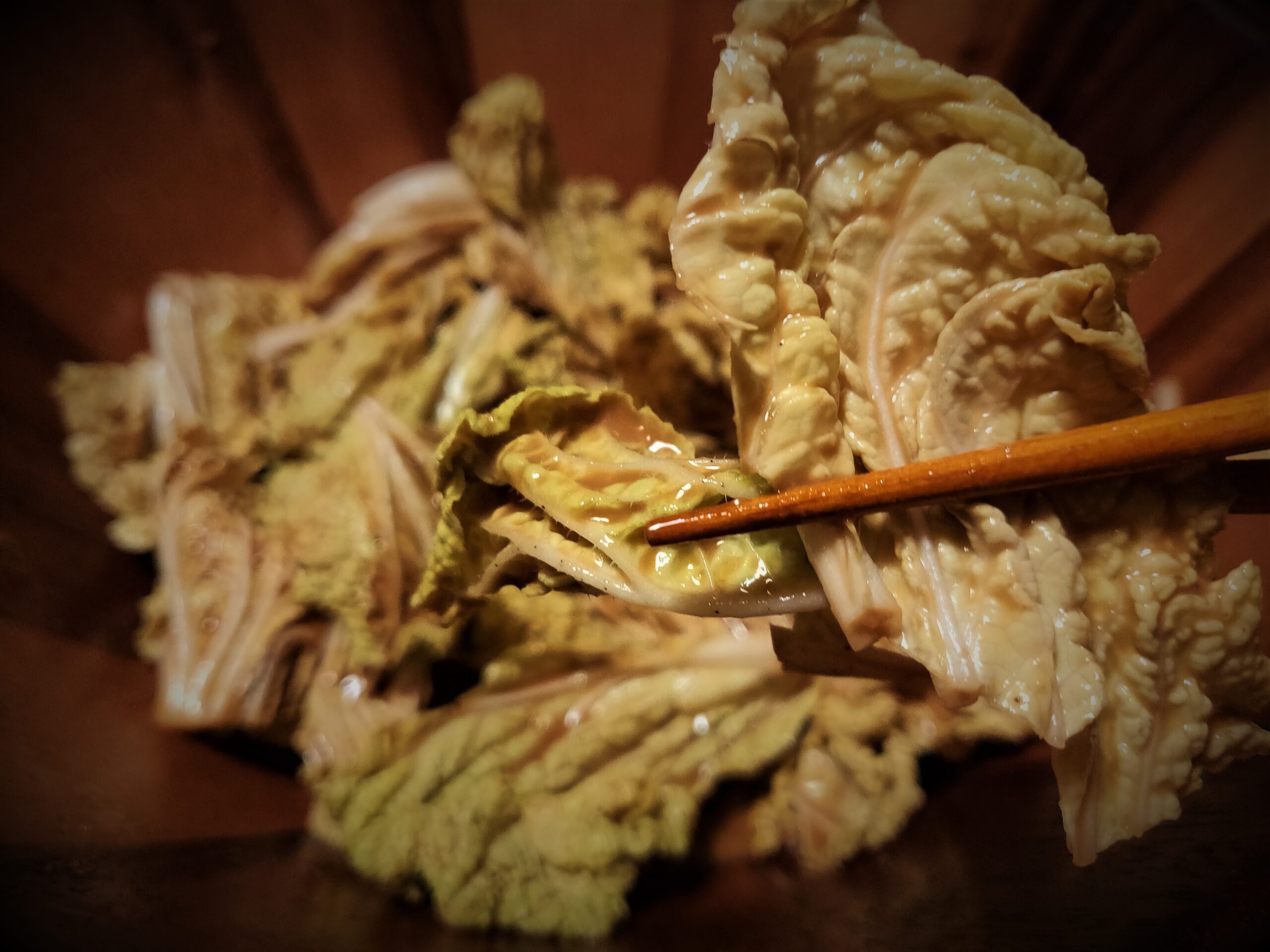

How did the name of Qianlong Baicai 乾隆白菜 come about?
The origin of the name “Qianlong Baicai” 乾隆白菜 is closely linked to Beijing’s oldest restaurant called “Duyichu” 都一处.
Legend has it that Emperor Qianlong was out on one of his incognito expeditions in his realm, often to the warmer south. When he returned to Beijing from an outskirt city Tongzhou 通州, it was the Eve of the Lunar New Year and no eatery was open. His men desperately roamed around the empty streets for hours to look for food and drinks for their increasing hangry Emperor, and they came upon a very humble little shed.
The group of men composed of the emperor and his guards all incognito, sat themselves down at a table and demanded the owner to serve them the best dishes he had. The shed normally only serviced the poorest labourers, and all that he could give them were boiled peanuts, cabbage salad and some leftover stewed pork.
It was the cabbage salad that Qianlong really enjoyed, which he downed with more bottles of rice wine. At the end of the meal, he asked the owner what name is the restaurant to which the man replied none. The emperor then remarked, “In the whole capital city, yours is the only place that remains open on New Year’s Eve. I think your restaurant should be called ‘Duyichu’ 都一处 (which means ‘the only place in the capital’)”.
The next day, officials surprised the shed’s owner with a huge beautiful black plaque with the new name in gold ink, written by the Emperor himself. It was then that the man realised who the guests were the night before. The restaurant became famous overnight and remains open to this day.
Hence the humble cabbage salad became known as Qianlong Baicai 乾隆白菜 – the “Emperor Qianlong’s Cabbage”.
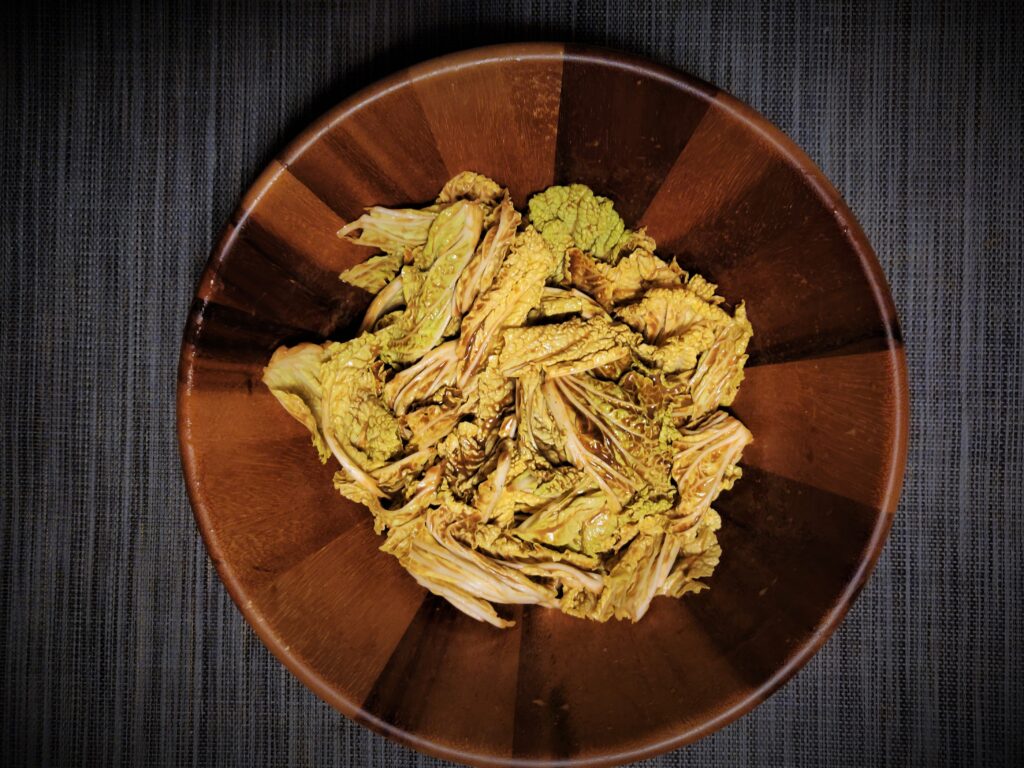
The Secret Formula “99311”
According to legend, the original Qianlong Baicai dressing is made with the formula of “99311” 九九三一一. This refers to “9 portions of aged vinegar, 9 portions of honey, 3 portions of Tahini, 1 portion of sugar and 1 portion of salt.
But of course, the dish has evolved since its first conception.
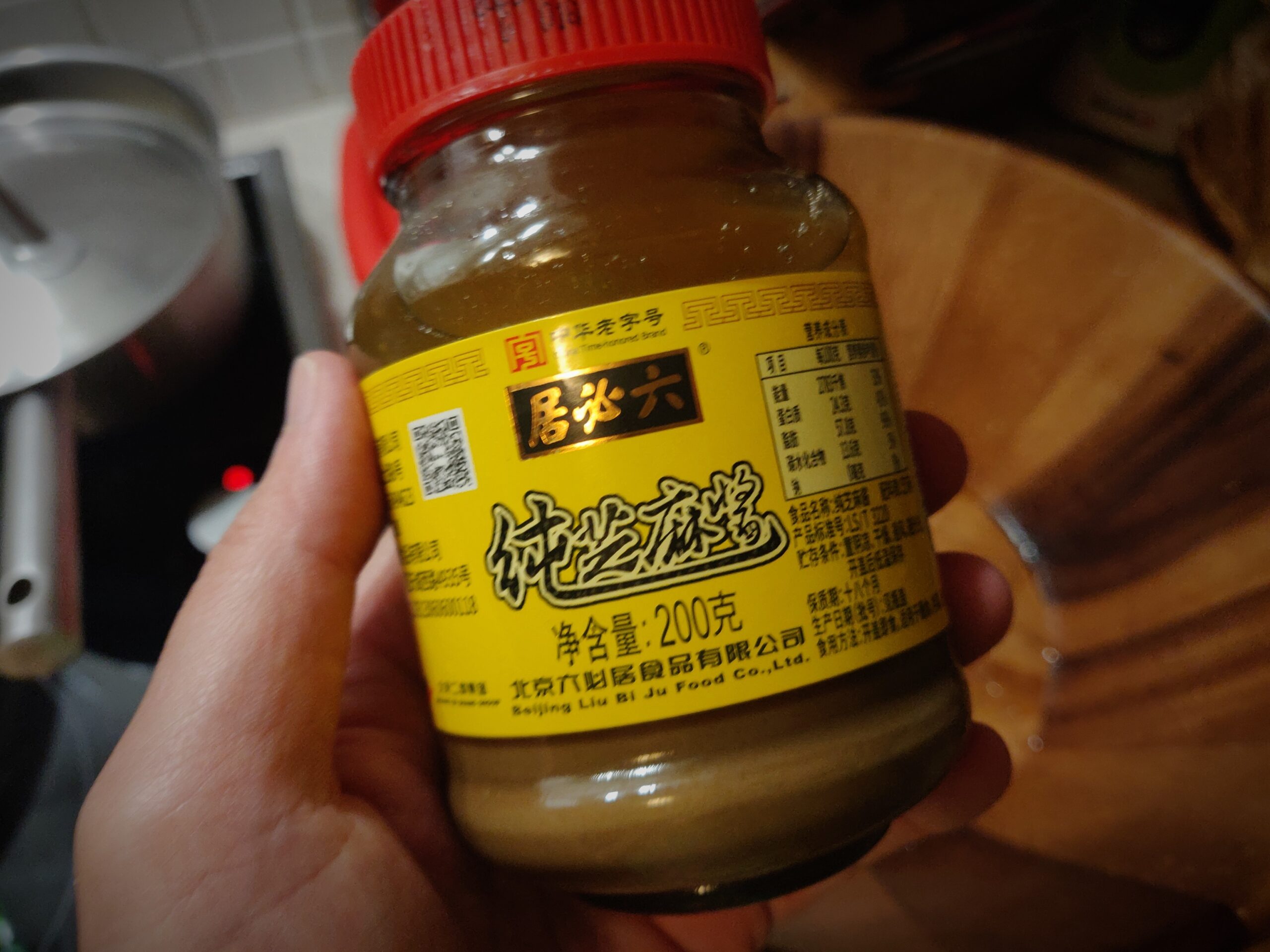
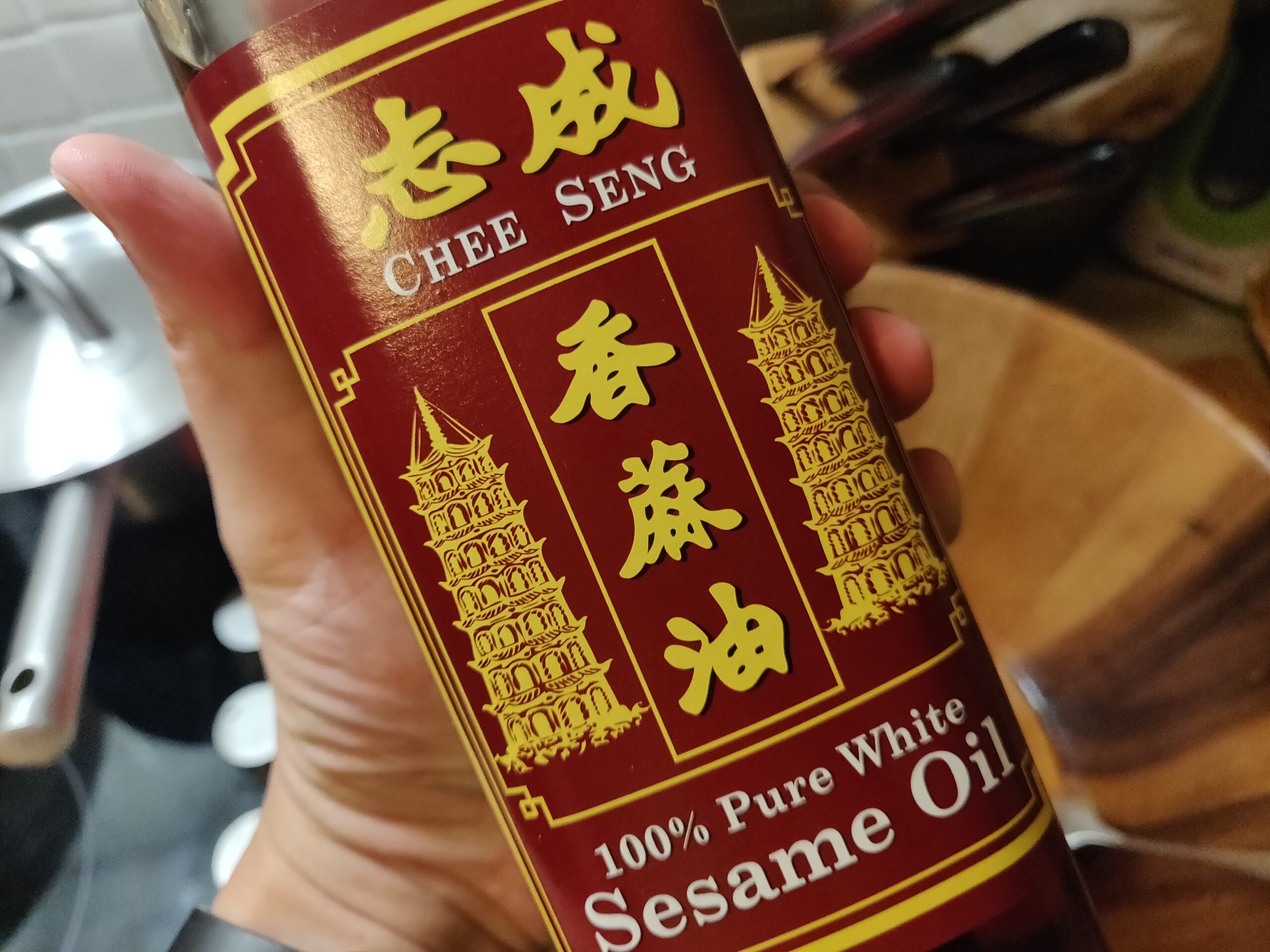
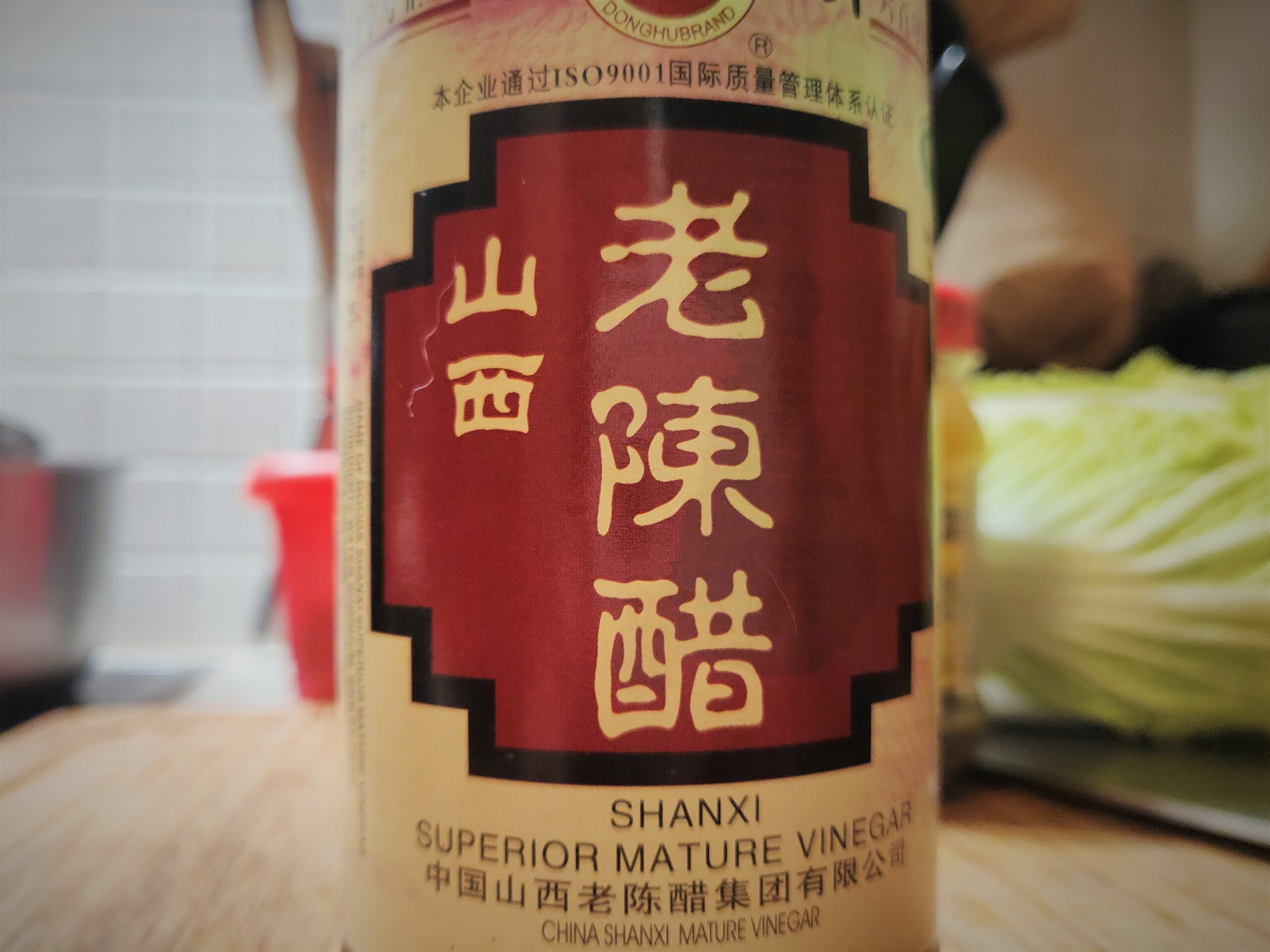
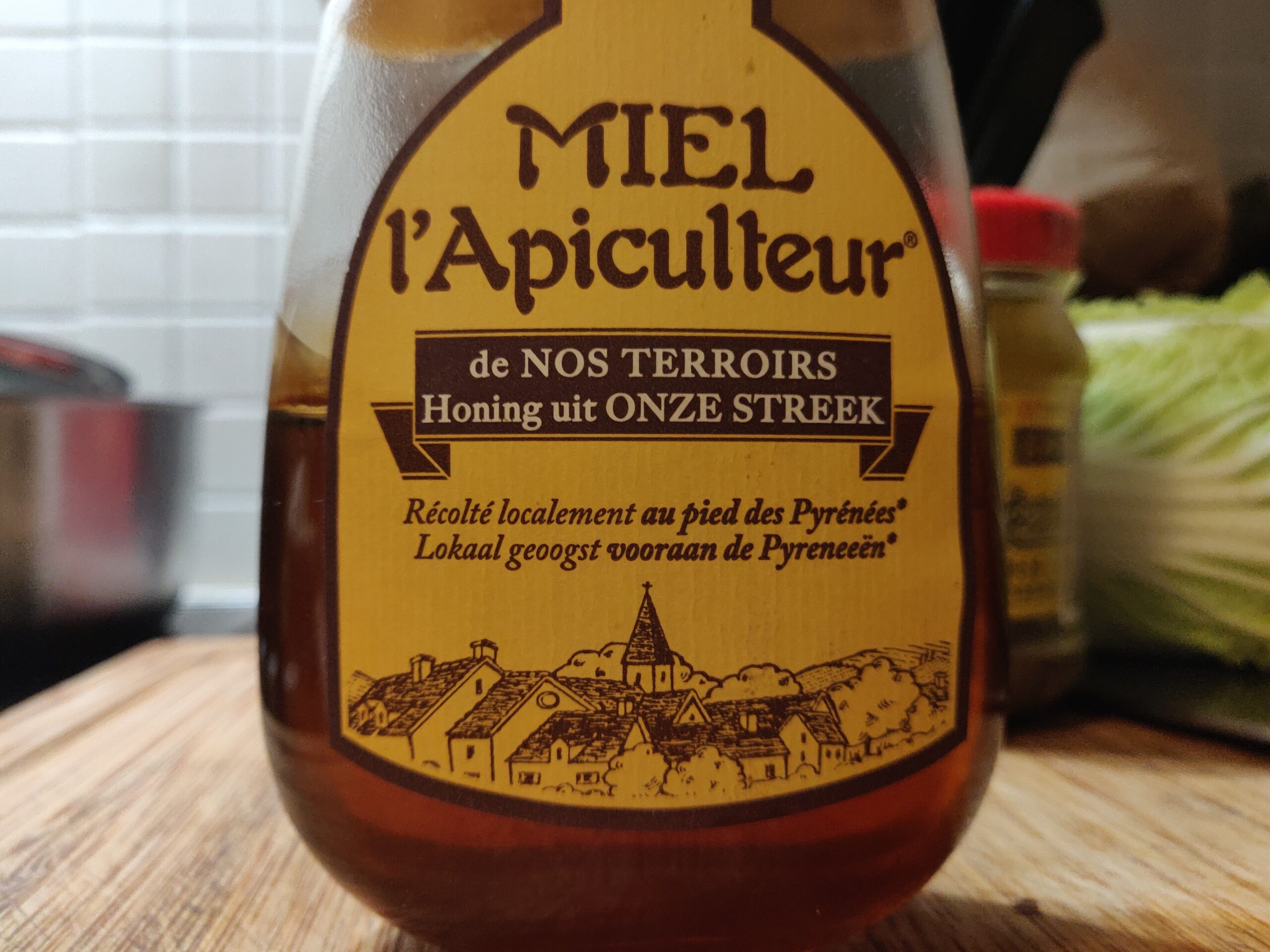
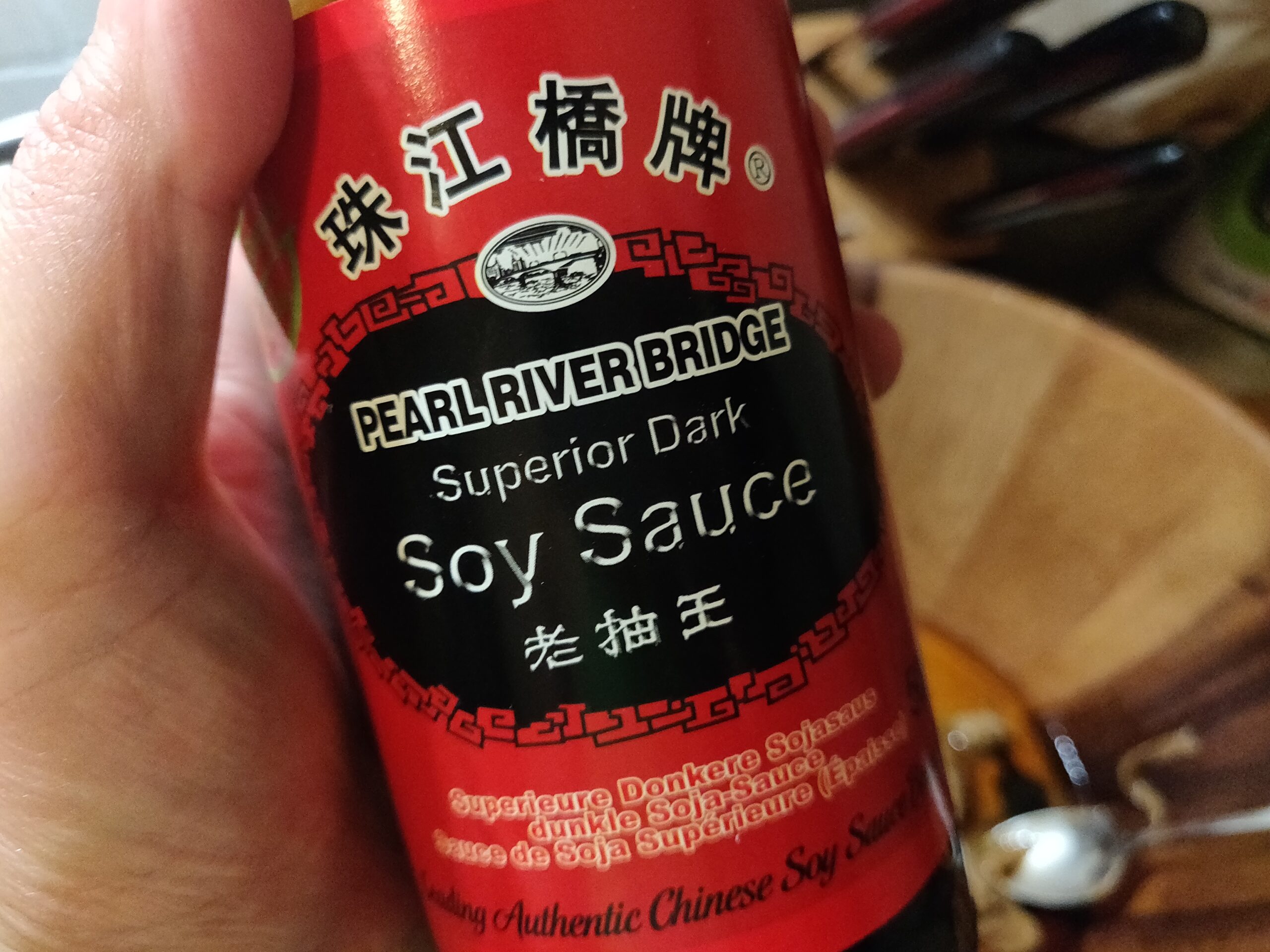
Ingredients:
- 1 small Chinese “Napa” cabbage
- 25g cane sugar
- 35g Tahini
- 25ml honey
- 10ml sesame oil
- 20ml aged Chinese vinegar
- 0.5 tsp salt
- 1 tbs dark soy sauce
Serves 2
Instructions:
- Cut your Chinese cabbage into two halves vertically. Only use the top leafy half. Peel the leaves off one by one taking care not to tear them. Use a small knife to cut any remaining stems away.
- Soak your leaves in a bowl of ice water while you make the dressing.
- Mix all your ingredients together into a smooth paste.
- Drain your cabbage leaves until they are completely dry and carefully coat each leaf with dressing in a salad bowl.
- Serve once this is done.



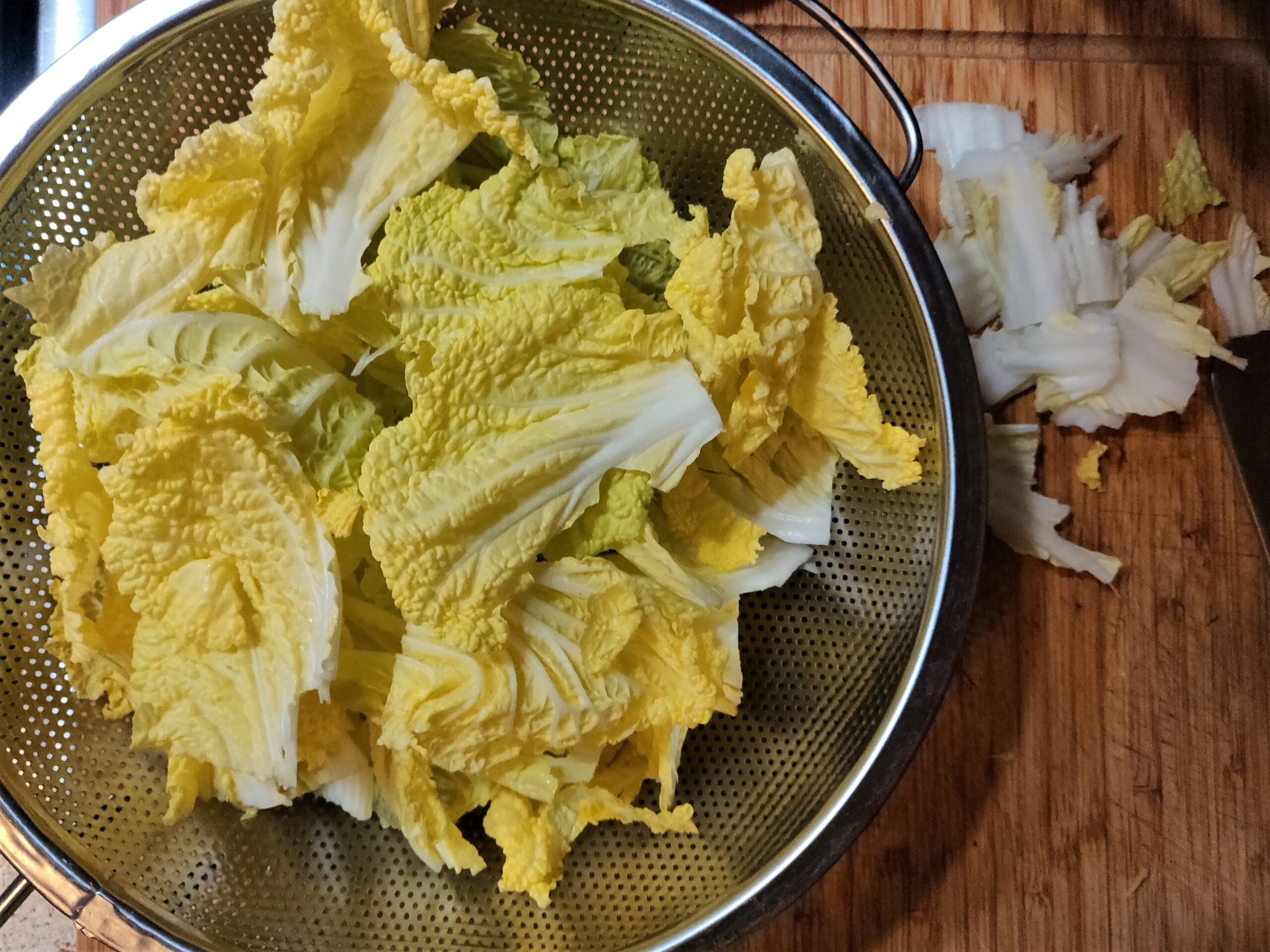

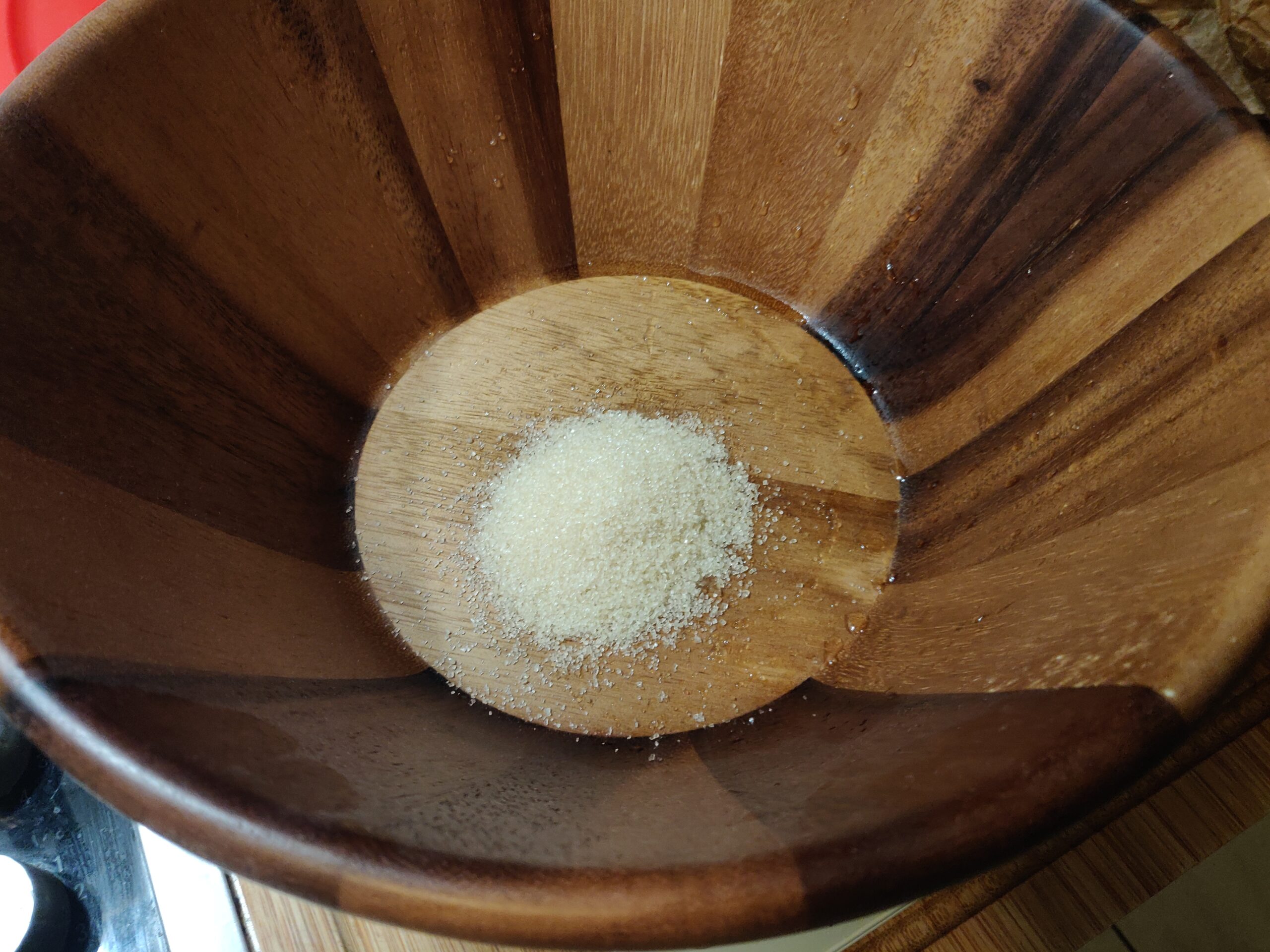
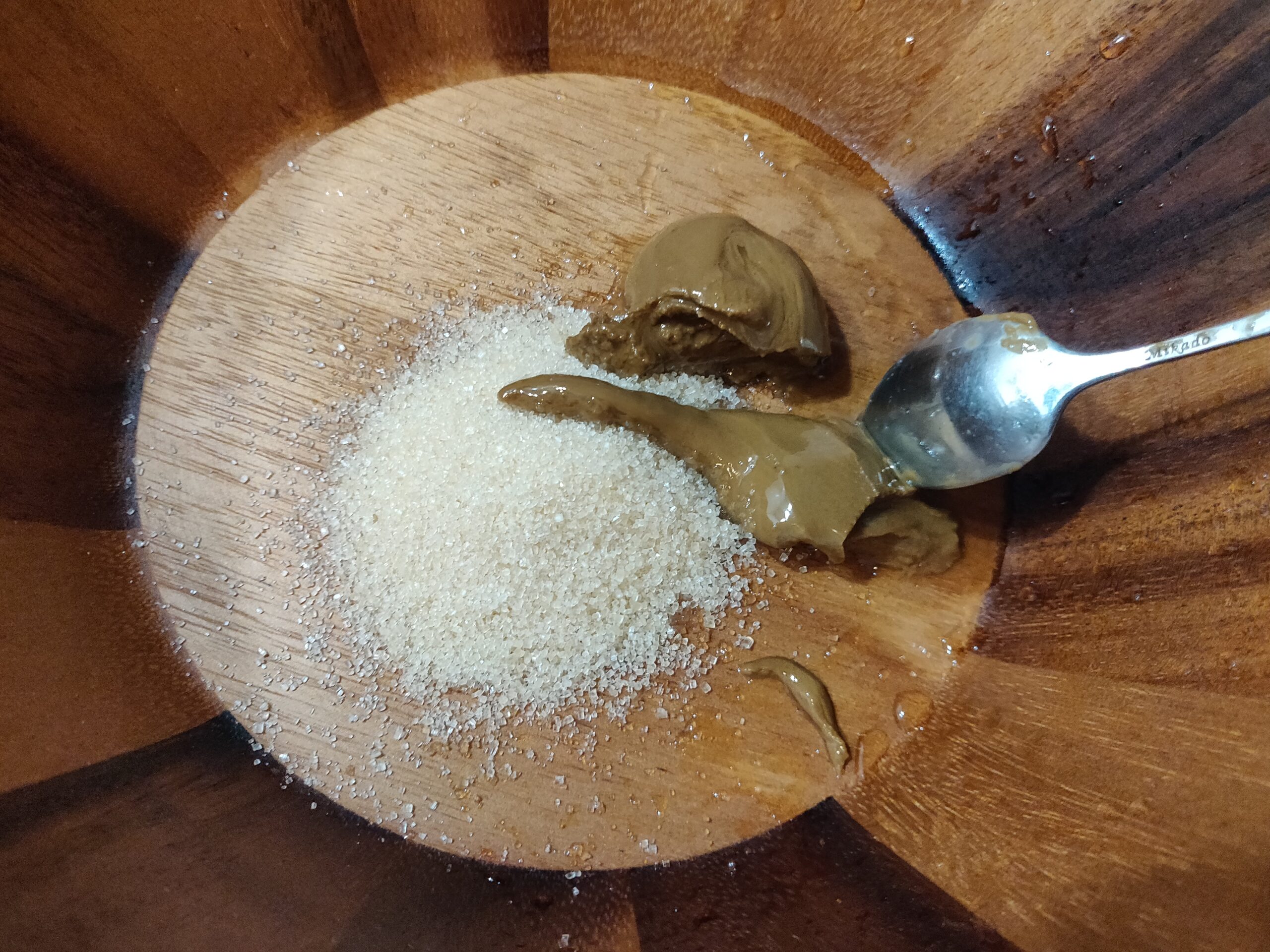

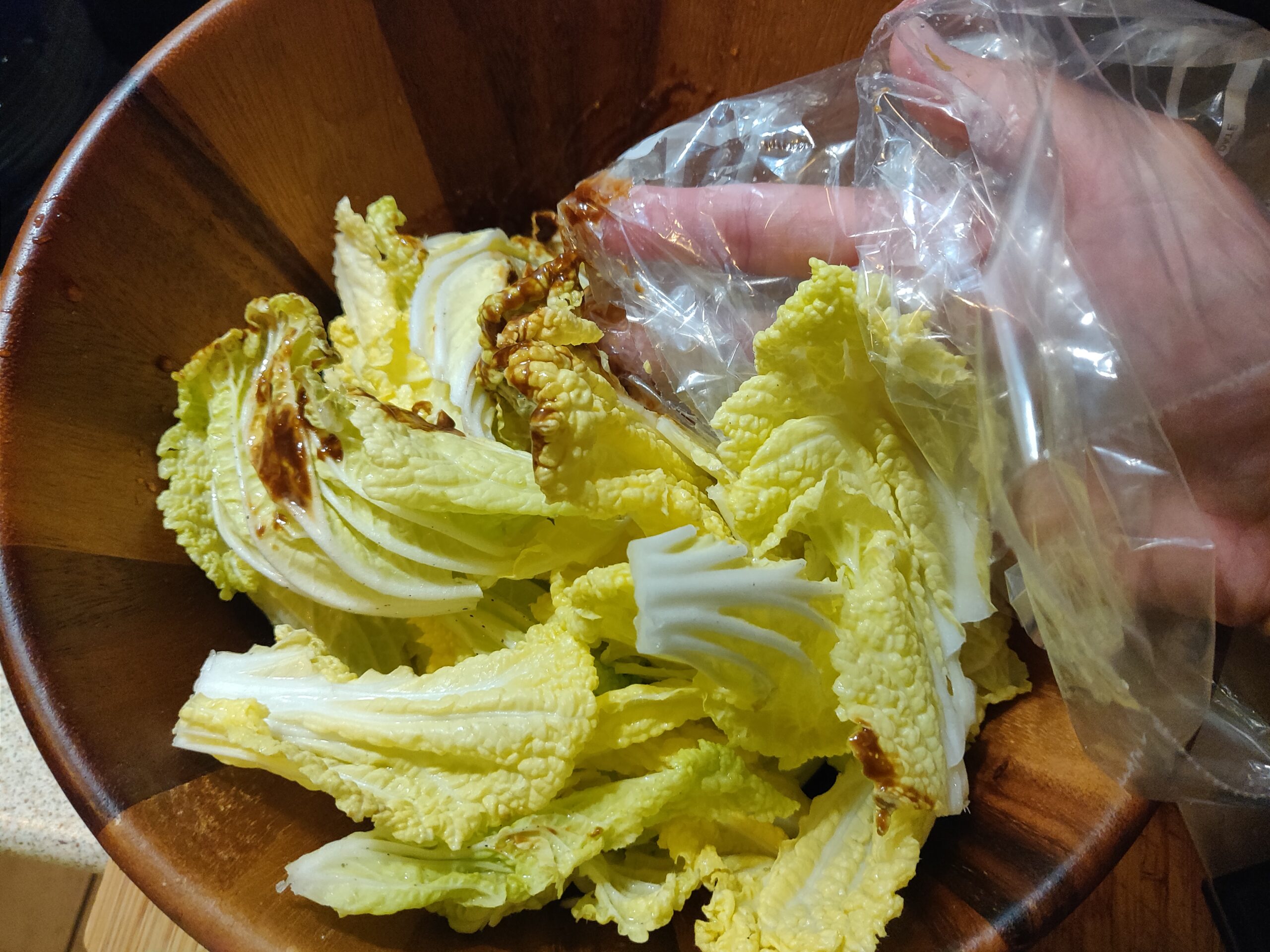
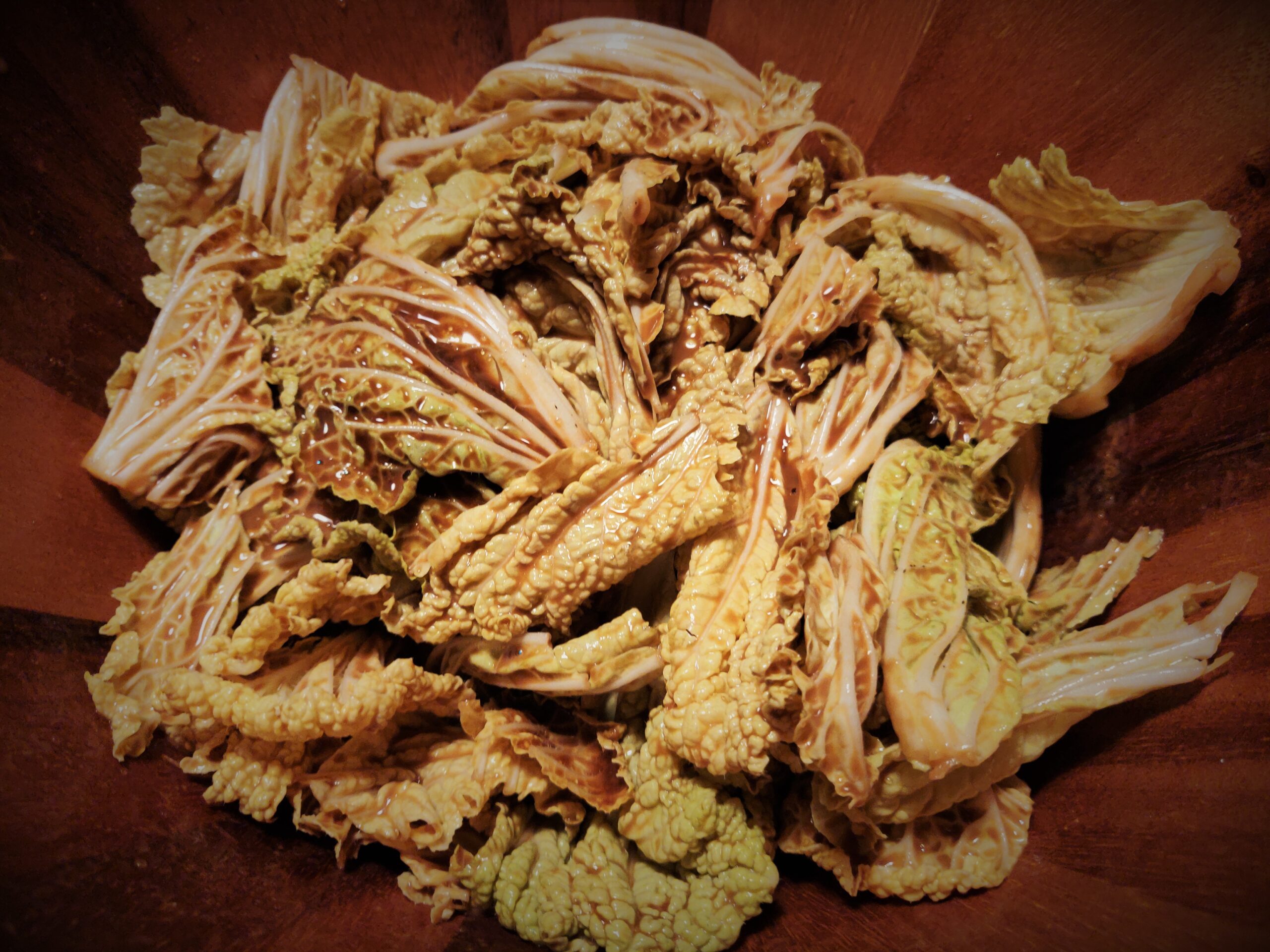

Tips:
- Choose a leafy Chinese cabbage as you’ll be using the leaves and not the stems.
- The ice bath will ensure the cabbage leaves remain crunchy.
- This is not a salad you can keep in the fridge for later consumption as the cabbage will lose liquid over time and go limp.
